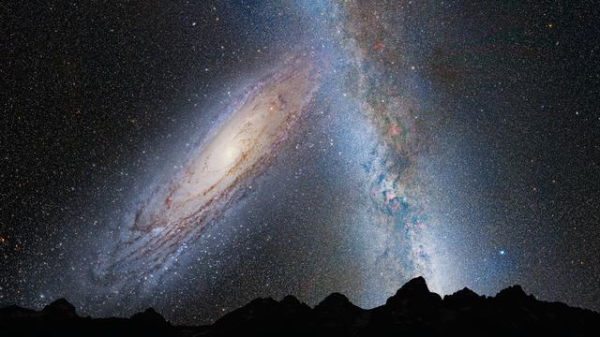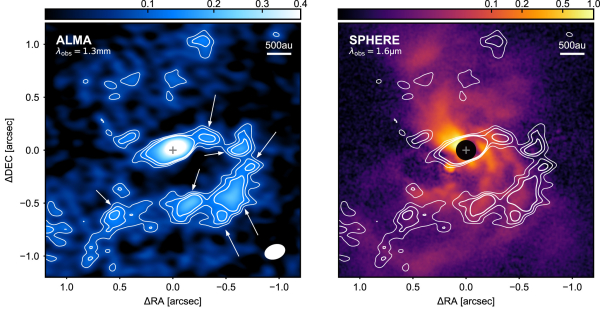Suche
Beiträge, die mit astrodon getaggt sind
Andromeda–Milky Way collision or Milkomeda or Milkdromeda or our suggestion, Andromeda Way (a street we would like to live on...)
📷 :https://images.nasa.gov/details/GSFC_20171208_Archive_e001738
#Astronomy #Space #Science #Astrophotography #AstroDon #MilkyWay #Andromeda #Galaxy #NASA
📷 :https://images.nasa.gov/details/GSFC_20171208_Archive_e001738
#Astronomy #Space #Science #Astrophotography #AstroDon #MilkyWay #Andromeda #Galaxy #NASA
NASA Image and Video Library
NASA Image and Video Library, serving up consolidated imagery and videos in one searchable location. Users can download content in multiple sizes and resolutions and see the metadata associated with images, including EXIF/camera data on many images.NASA Image and Video Library
We can now DIRECTLY OBSERVE planets being born!
Each of the arrow-marked blobs is a likely planet-in-the-making around the infant star FU Orionis (great name), located 1,350 light years away in the constellation Orion.
https://arxiv.org/abs/2404.05797 #space #science #astronomy #astrodon
Each of the arrow-marked blobs is a likely planet-in-the-making around the infant star FU Orionis (great name), located 1,350 light years away in the constellation Orion.
https://arxiv.org/abs/2404.05797 #space #science #astronomy #astrodon
Direct imaging of exoplanets
Over the past 4 decades, the exploration of planets beyond our solar system has yielded the discovery of over 5600 exoplanets orbiting different stars.arXiv.org


